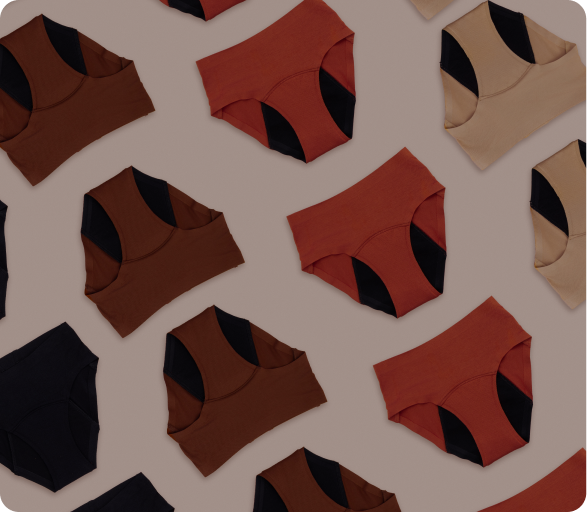Puberty is one of the most significant milestones in a girl’s life. It marks the beginning of a new chapter, one that comes with exciting changes, unfamiliar feelings, and a whole lot of questions. For caregivers, it can be equally emotional: watching your child grow, wanting to offer the right support, but not always knowing how.
This guide is here to make that journey easier for both girls and the people who care for them. We’ll walk you through what puberty is, what to expect physically and emotionally, and how to approach this phase with empathy and confidence.
What Is Puberty?
Puberty is a natural phase of development when a child’s body starts to mature into an adult body. Triggered by hormonal changes, it involves physical growth, emotional shifts, and eventually reproductive capability. For girls, puberty typically begins between ages 8 and 13, although starting slightly earlier or later is also normal.
During this time, the brain signals the body to release hormones—primarily oestrogen and progesterone in girls—which set a chain of changes in motion.
The Physical Changes You’ll Notice
Every girl experiences puberty differently, but most go through a similar sequence of physical changes. Here’s what typically happens:
-
Breast Development
One of the first signs of puberty is the formation of breast buds. Over time, breasts grow and take on a more defined shape. -
Body Hair
Hair begins to grow in the pubic area, underarms, and eventually on the legs. Some girls may also notice fine hair on the upper lip or arms. -
Growth Spurts
Expect sudden increases in height and weight. This rapid growth is one of the most visible signs of hormonal changes. -
Menstruation
Periods usually begin around two years after breast development starts. This monthly cycle is a normal part of reproductive health. -
Skin Changes
Increased oil production can lead to pimples or acne. Basic skincare becomes more important during this phase.
These physical changes can feel surprising or even overwhelming. That’s why understanding what’s happening and why is so empowering.
The Emotional Side Of Puberty
Emotional development is just as important as the physical side. With changing hormones come shifting moods, new feelings, and growing awareness of self and others.
Here are a few emotional changes girls might experience:
-
Mood Swings
Feeling happy one moment and sad the next is common. This happens because of hormonal fluctuations affecting mood-regulating chemicals in the brain. -
Body Image Concerns
As their bodies change, many girls become more self-conscious. Support from caregivers can help them feel more confident. -
Increased Sensitivity
Emotional responses may feel stronger or more unpredictable. Girls might cry more easily, get frustrated quicker, or need more space than usual. -
Desire For Independence
As their identity develops, girls may start wanting more privacy or autonomy.
This stage of emotional development isn’t always easy but it’s completely normal. Caregivers can help by listening without judgement, offering reassurance, and encouraging open dialogue.
How Caregivers Can Offer Support
Being a steady, understanding presence makes all the difference. Here’s how caregivers can be a source of strength:
-
Create Safe Spaces
Make it easy for her to ask questions about her body, her feelings, and anything else. No topic should feel off-limits. -
Educate Without Overwhelming
Use books, websites, or even short videos to explain concepts like menstruation, hormones, or hygiene. Offer information gradually and age-appropriately. -
Normalise Her Experience
Remind her that puberty, with all its ups and downs, happens to everyone in their own time. -
Celebrate Milestones
First periods, growth spurts, or new responsibilities can all be acknowledged in a supportive, positive way. -
Be Patient
Emotional outbursts or withdrawn moods may surface. Meet them with empathy, not criticism.
Health Tips During Puberty
As her body changes, new health needs emerge. Here’s what to keep in mind:
-
Hygiene
Encourage daily bathing, skincare, and the use of deodorant. Talk about menstrual hygiene openly. -
Nutrition
A balanced diet supports healthy development. Focus on iron-rich foods, calcium, and plenty of water. -
Exercise
Regular movement helps with mood, growth, and body confidence. -
Sleep
Aim for 8–10 hours a night to support hormonal balance and emotional well-being. -
Routine Checkups
Healthcare visits can help monitor development and answer medical questions she might hesitate to ask you.
Puberty Is Not a Problem, It’s a Power Shift
There’s often too much fear or secrecy around puberty. But the truth is, it’s a powerful phase of transformation. It’s where a girl begins to understand herself more deeply, claim her autonomy, and grow into the woman she’s becoming.
With the right guidance, she doesn’t just “get through” puberty, she learns to embrace it.
Navigating puberty isn’t just about tracking physical changes or managing hormonal shifts. It’s about nurturing emotional development, supporting identity, and growing together in understanding.


































































